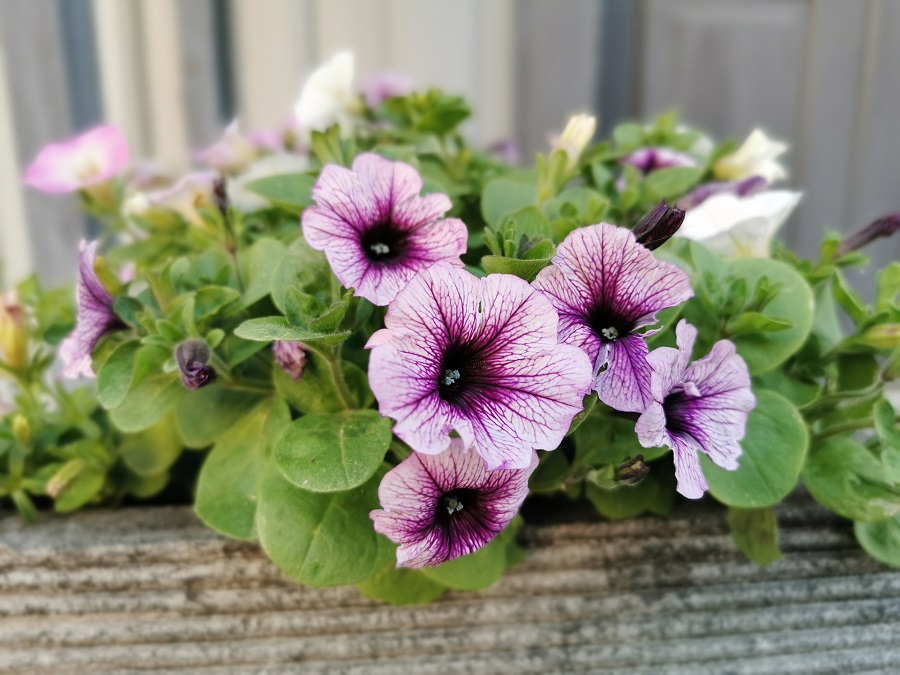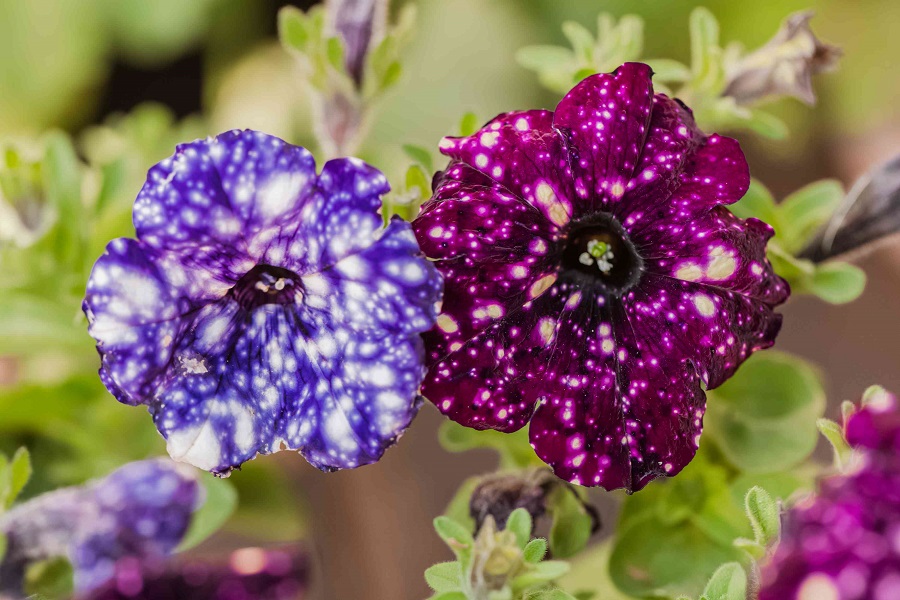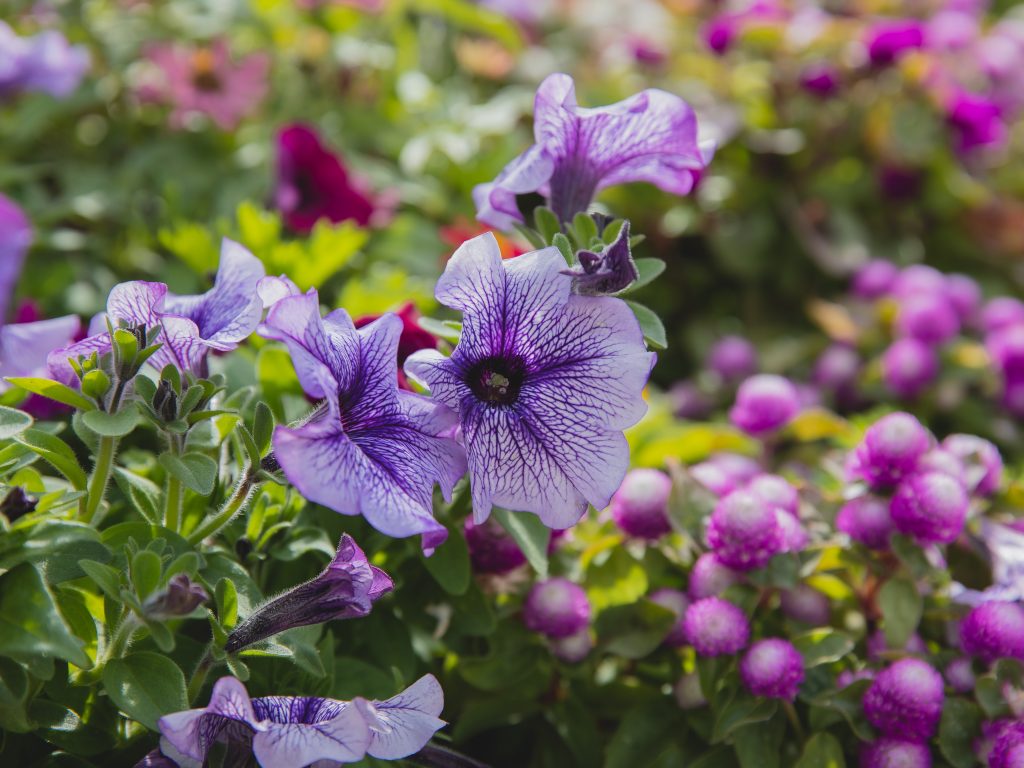Gorgeous Petunia Plant - Find Out How to Care for Petunias
Petunias are among the most beautiful garden plants. They astonish not just with their colors, but also a wonderful smell one cannot ignore. Are you wondering if your garden allows for cultivating such plants? Check what petunias need and how to take care of them. Perhaps they can become the main plant among your flowerbeds.

Petunia - where does this plant come from?
Petunias are solanaceous plants including many varieties. It is estimated that there are over 30 types of petunias. The plant occurs naturally in South America, although it’s popular all over the world and often appears in flowerbeds next to houses.
A petunia is characteristic among other plants thanks to its incredibly intense smell. So, not only it’s a perfect garden decoration, but it also enriches the space with an aroma. The leaves are noteworthy features of the plant as well - if you take a closer look, you will notice they are hairy.

What are the popular types of petunias?
One of the varieties - trailing petunia, also known as surfinia is undoubtedly the most popular type of these plants. Gardeners frequently encounter the mentioned names - what’s more, the terms petunia and surfinia are often used interchangeably, which isn’t quite correct.
In addition to this type, there are many other noteworthy varieties. They include the following types of petunias:
- petunia altiplana
- petunia axillaris
- petunia exserta
- petunia inflata
- petunia occidentalis
- petunia riograndensis
- petunia scheideana
- petunia guarapuavensis
- petunia integrifolia
- petunia bonjardinensis

Where to place petunias - in sun or shade?
A petunia plant definitely prefers sunny spots - but the sun shouldn’t be direct, but rather slightly dispersed. It means you can plant a bit taller plant in the vicinity that will slightly cover the petunia, but won’t block too much light.
When picking a spot for petunias, make sure the place is not vulnerable to strong winds. It’s a vulnerable plant and intense gusts might damage the stems or the leaves.
Petunia - soil requirements
Petunia is a relatively resistant plant which can grow in different conditions. But its growth is the most efficient if the soil is fertile. Additionally, you can enrich the ground with humus and make sure it’s permeable. As suggested by experts, the soil pH should range between 5.6 and 6.5, which means it has to be slightly acidic.

How to water petunias?
Petunia is characteristic for the fact that it can endure scarce watering and periods of drought. But it doesn’t mean you should let the plant dry completely. If you want the plant to develop beautiful and rich flowers, water it regularly and profusely, but don’t let the water stay in the ground. Watering the plant once a day is enough in most cases. During an intense growth period, which occurs in summer, you can water the petunia twice a day.
Do petunias need feeding?
Petunia care is a process which requires feeding. Do it regularly - once every 2 weeks. The plant should be strengthened with special mixes from planting it in the ground until late autumn. This encourages the plant’s growth and blooming, but also allows the petunia for taking root - which is very important.
What are the best substances, in this case? Use products from a gardening store - the ones designed for flowering plants are probably the most beneficial. You can also enrich the ground using natural fertilizers such as:
- manure,
- vermicompost,
- guano.

Are petunias vulnerable to diseases and pests?
Petunias aren’t difficult or demanding to grow. Unfortunately, their vulnerability to various pests and diseases is a problem. If the soil in which a petunia plant grows is of a lower quality, and it gets overwatered, the plant usually develops fungal diseases. Mildew is one of them. It occurs in the form of a white residue on the ground, which then spreads onto the plant. If you don’t react quickly - by using chemical products or removing the infected plant parts - the disease might spread onto other plants growing in the same flowerbed.
Other petunia diseases include the following:
- dry rot,
- botrytis,
- chlorosis,
- brown spots,
- brown rot.
What’s more, petunias might be prone to pests which tend to appear on the leaves. Aphids are the most dangerous type. Various mites and whiteflies may also appear.
Petunia seedlings - prices
Petunia seedlings are among the cheapest on the market, so you can easily plant them all over the flowerbeds in your garden. One plant costs less than $10. If you make a large order, you might expect a discount.

📍 What does a petunia look like?
Petunia is a short decorative plant often grown in flowerbeds in gardens. It has flowers that resemble cups - they have different colors, depending on the variety. In summer, petunias bloom beautifully, which makes them a perfect garden decoration.
📍 When to plant petunia seeds?
Planting petunia seeds is usually done in February. The seeds are placed in small pots with peat and sand. The seedlings can be put in the ground in May, when there's no risk of frost.
📍 Where to plant petunias?
Petunia plants love sunny spots - that's where they can fully develop. Protection from the wind is an important aspect. Strong gusts might damage the stems and leaves.
📍 How to water a petunia?
Petunia needs frequent watering - typically, every day. During a drought period in the summer, you might increase the frequency up to twice a day.
Featured articles




